Here in Colorado, we love our mule deer hunting. Chasing mountain mule deer is terribly addicting. It’s a fun, visual, spot and stalk adventure. Whether you’re hunting mule deer early in the season or during the rut, here are 5 tips to remember for your next mule deer hunt:
-
Do Your Homework

Most of my best mule deer spots were discovered long before hunting season. Before the hunt, spend time poking around your unit using tools like OnX Maps and Google Earth. This is the best way to find great deer habitat, public land boundaries, unpressured pockets, and where all three of those factors overlap.
Forget Your Assumptions
As you’re scouting for a hunt, try not to make too many assumptions. For example, folks often assume that they’ll need to hunt mule deer up high in September and down toward winter range in November. Yes, mule deer in many places do migrate from high elevation summer range down to low elevation winter range. But it’s not that black and white. I’ve had great September mule deer hunts around 6,500 feet and excellent late season hunting well above 9,500 feet. Much more important than elevation, find quality habitat and areas where deer can escape pressure.
Mule Deer Habitat
Mule deer are highly adaptable animals, living anywhere from the tundra down to the desert. So when looking for great mule deer habitat, it can take on a lot of different forms. But one frequently consistent factor is brushy landscapes. Deer are browsers. Whether it’s willows, mountain mahogany, oak brush, sage or chokecherry, brushy landscapes always seem to concentrate deer.
In addition to great habitat, you’re also looking for places where deer can escape pressure. And this doesn’t necessarily mean going further into the backcountry. Sometimes, backpacking further from the roads is a great option. But in many areas, you’ll find good deer hunting in overlooked pockets close to roads, along private boundaries or in those odd spots nobody bothers to hunt.
In the end, you’re looking for spots where all those factors overlap – public land, great habitat and unpressured pockets. Before you leave home, take the time to discover some of these spots and have your plans (and plenty of backup plans) ready
-
Set up Before Daylight
Mule deer hunting often requires glassing. And it’s no secret that those first and last hours of the day are often the most productive. With that in mind, prepare to be disciplined on your hunt. Get out of bed early enough to be in your first glassing spot before daylight. Not at daylight – before daylight.
I like to arrive at my glassing spot while it’s still dark. First, it allows me to arrive under the cover of darkness. Second, it gives me time to put on some extra layers, get out my tripod and get settled. I don’t like to me moving around once it gets light. The very moment it’s light enough to see, I want to be sitting down with eyes on the glass, not messing around getting settled.
Sometimes, that means a long hike in the dark each morning. Do what it takes to leave camp with plenty of time to make the hike. Organize your daypack the night before. Fill your water bottles and pack your lunch. When you can get up, put your boots on and start hiking, it’s much easier to get out of that warm sleeping bag in the morning.

-
Put Your Binoculars On a Tripod
Holding your binoculars is fine some of the time, like when you’re on the move. But you’re not truly glassing until you put your binoculars on a tripod. If you’ve never glassed off a tripod, you might think you’re looking through new binos. The difference is really that dramatic.
When you reach your glassing point in the morning, take the time to get out a tripod and set up your binoculars. Binocular adapters are readily available for any type of binos. With a steady rest, you’ll be able to glass longer and see in much greater detail.
-
Hunt all Day Long
The first and last part of the day are the best time to catch mule deer on the move. But that doesn’t mean you should head back to camp for lunch. In any type of hunting, persistence pays off. And it’s definitely true of mule deer hunting. You’ll increase your opportunities if you’re able to work hard all day long.
Each night, take time to pack your lunch for the next day’s hunt. In fact, I pre-load gallon zip bags before I leave home with a lunch for each day of hunting. That way, all I have to do is grab a baggie and throw it in my pack. With enough calories to last the day, you’ll be ready to stay out all day long.
Ideally, you’ll spot deer in the morning and watch where they bed. The closer we get to the rut, it’s not uncommon to see a buck come cruising through a group of does in the middle of the day to check them out. Keep an eye on those does and eventually a buck will show up.
For all day hunting, consider carrying a Caribou Gear Hunter’s Tarp. It’s a multi-purpose, totally waterproof, ultralight tarp. We always carry one for field dressing, as it provides a clean surface when quartering an animal in the field. But it also makes an excellent glassing shelter, whether it’s from hot sun, rain or snow.

-
Don't Give Up On Proven Spots
When your buddy kills a buck in a good area, don’t feel like you need to go somewhere else. The idea that the deer are blown out of that area is often a bad assumption. Sure, they might get scarce for a day or so; maybe only a few hours. But if deer like an area, they’ll be back.
On several occasions, friends and I have killed a buck and then seen deer back in that same area. In fact a few years ago, a friend and I killed bucks less than a couple hundred yards of each other, only two days apart. Whether there is a carcass on the ground or not – deer like the areas they like. Don’t give up on that spot entirely. They’ll likely be back.
-
Don't Give Up On A Spooked Buck
If you blow a stalk and spook a buck, it’s not game over. Never believe that old saying, “they ran to the next county. ” More likely than not, they will still be in the neighborhood.
Last year on a September mule deer hunt, I blew a stalk on a buck and watched him bounce over the hill. The very next day, one of my friends was able to kill that buck, just 800 yards from where I’d spooked him the day before.
In many cases, mule deer have high fidelity to their favorite areas. They might move over to the next drainage or even a few drainages when spooked. But out of sight is out of mind. And in many situations, you may be able to relocate that deer and get another opportunity.
Good Luck On Your Mule Deer Hunts This Year
Be safe and have a great time on your next mule deer hunt. And don’t forget to grab a set of Magnum Pack or Muley Game Bags before you go! The Magnum Pack is a more robust system and the Muley is streamlined for backcountry use. To learn more about those options, check out this article: How to Choose the Right Game Bag System for Your Next Hunt.

By Ryan McSparran
Ryan is a hunting guide based in Colorado, and is proud to be a part of the team at Caribou Gear.








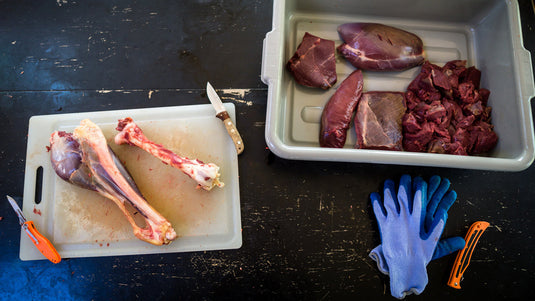
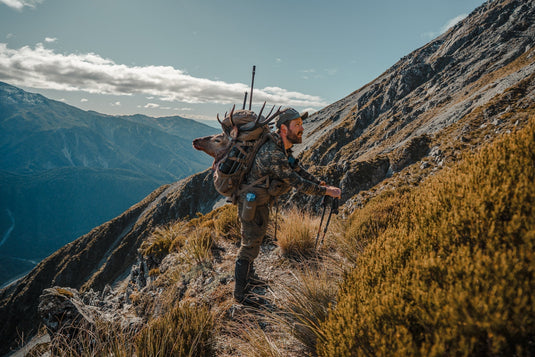
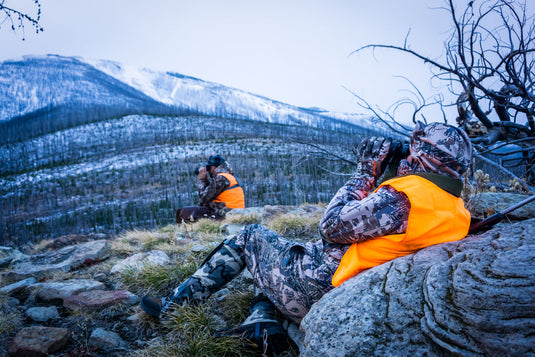
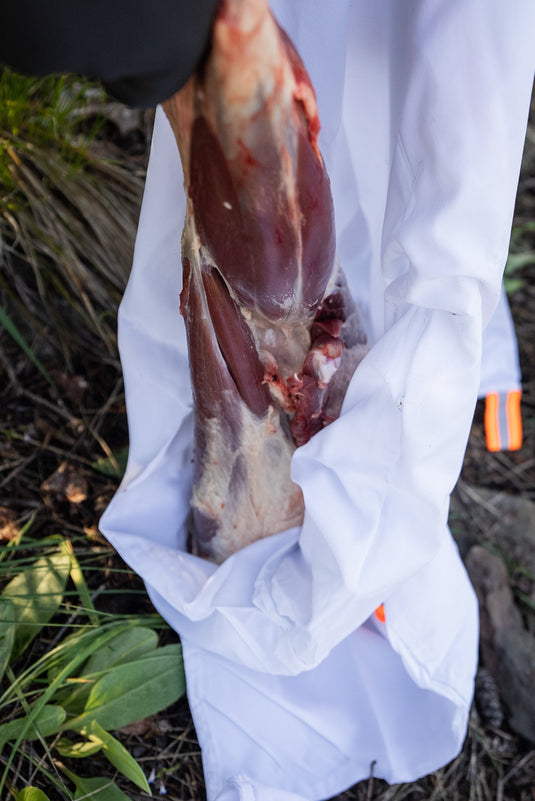
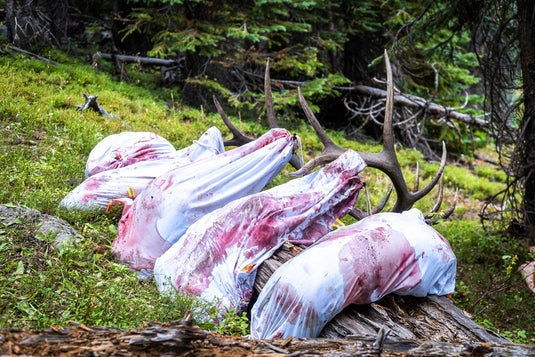
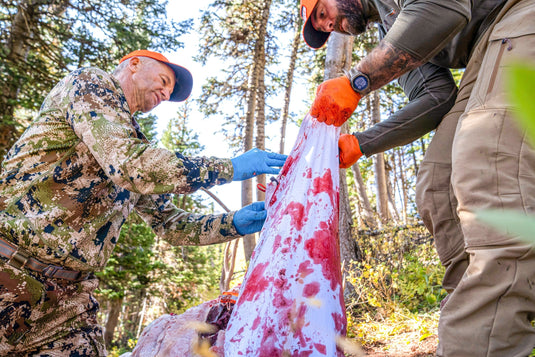
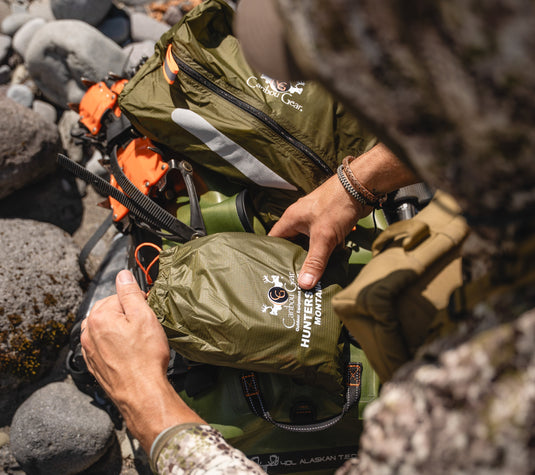
Message for Ryan McSparran
Hi Ryan – I live in Scotland and do quite a bit of hunting over here. I’ve got a bucket-list trip which is to come to Colorado and hunt for Mule Deer. Although there’s no bow hunting here in the U.K. I’m looking at the possibility of buying a bow. My thinking was that I’d have more of a chance to get an over the counter permit during the bow season rather than the rifle? Would you be able to give me a couple of tips that I could add to my trip research please? I’m not asking for best spots etc just really to understand what you would do if you were in my position. Thanks
Alex
If you want to make your ice last a couple of weeks in the cooler, pickup a couple of those heavy thick canvas type sleeping bags and wrap the coolers for added insulation. You can find them at garage/tag sales for a few dollars each. I usually wrap two or three bags around each cooler and have had gallon jug ice last for two weeks in 70-80 daytime weather.
Thanks for the good info, I will be doing a guided early November muley hunt in southern British Columbia this year and enjoyed reading this.